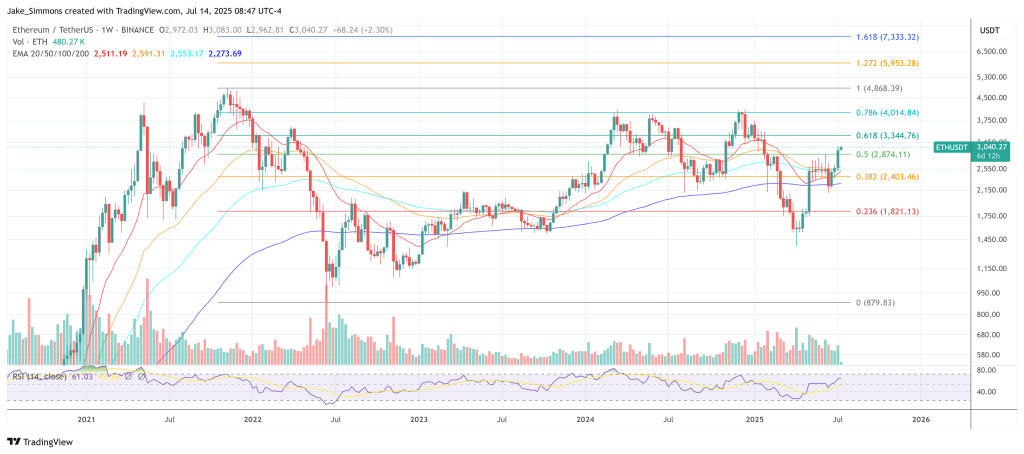In a conversation on the Epicenter podcast, Ethereum co-founder Vitalik Buterin addressed the looming threat posed by quantum computing—an often-cited existential risk for modern cryptography and blockchain networks. While many in the crypto industry regard quantum attacks as a distant or even speculative concern, Buterin offered a more nuanced and data-driven assessment, rooted in current research and technical forecasting.
Is Ethereum Prepared Against Quantum Computers?
According to Buterin, the community can take meaningful cues from the prediction markets hosted on platforms like Metaculus, which aggregate expert forecasts on emerging technologies. “If you just search Metaculus quantum computing,” he noted, “the median answer that you get for when a quantum computer is powerful enough to break cryptography is somewhere between 2030 and 2035.” This projected timeframe places the emergence of a credible quantum threat well within the lifespan of Ethereum and other blockchain protocols currently in operation.
Buterin was careful, however, to distinguish between hype and reality. “There’s a lot of grift in the quantum space,” he warned. Some organizations claim to have quantum computers, but what they often showcase are quantum adiabatic machines—devices that may be “technically quantum” in structure, but are functionally incapable of executing the kinds of operations necessary to pose a real threat to cryptographic infrastructure. “They basically can’t really do anything that interesting that classical computers can’t do,” he clarified.
The true benchmark for quantum risk, Buterin explained, is not the existence of quantum machines per se, but their demonstrated ability to run specific algorithms that break cryptography. “The question you ask is: What is the biggest number that you’ve factored using Shor’s algorithm?” Buterin emphasized. “As long as the answer keeps not getting above 35, then it’s not super interesting.” Shor’s algorithm is the primary quantum algorithm that could undermine RSA and other cryptographic standards widely used in blockchain technologies. Its application at scale would signal a fundamental vulnerability in systems that rely on public key encryption.
Nevertheless, Buterin acknowledged that real progress is being made in quantum computing research. While there hasn’t yet been a breakthrough that justifies panic, there is “a huge amount of progress happening on quantum resisting everything,” he said. The Ethereum community is already preparing for this eventuality through cryptographic innovation. “Justin Drake has been working on quantum-resistant aggregation-friendly signatures,” Buterin noted, highlighting the active development of post-quantum cryptographic primitives within the Ethereum research team.
Buterin concluded on a note of cautious optimism: “So I’m actually very optimistic that Ethereum will be able to cover it.” The community’s proactive stance on post-quantum security, combined with the slow and measurable pace of quantum progress, appears to offer a reasonable window for transition.
That optimism gained fresh momentum last week when the Ethereum Foundation published a roadmap to embed a zkEVM directly into Layer 1 within twelve months. The initiative, outlined by researcher Sophia Gold in the blog post “Shipping an L1 zkEVM #1: Realtime Proving,” commits the protocol to verifying succinct STARK-based proofs for 99 percent of main-net blocks inside the 12-second slot time, with a mandatory security floor of 128 bits and proof sizes below 300 KiB. By enabling validators—even solo stakers running “home provers”—to verify blocks using quantum-resistant proofs rather than re-executing every transaction, the plan both accelerates scalability and shrinks Ethereum’s attack surface should Shor-capable hardware arrive ahead of schedule.
At press time, ETH traded at $3,040.

Featured image from YouTube, chart from TradingView.com

Editorial Process for bitcoinist is centered on delivering thoroughly researched, accurate, and unbiased content. We uphold strict sourcing standards, and each page undergoes diligent review by our team of top technology experts and seasoned editors. This process ensures the integrity, relevance, and value of our content for our readers.







